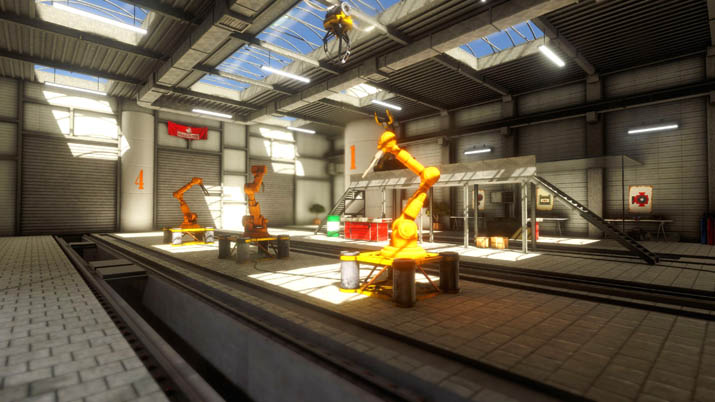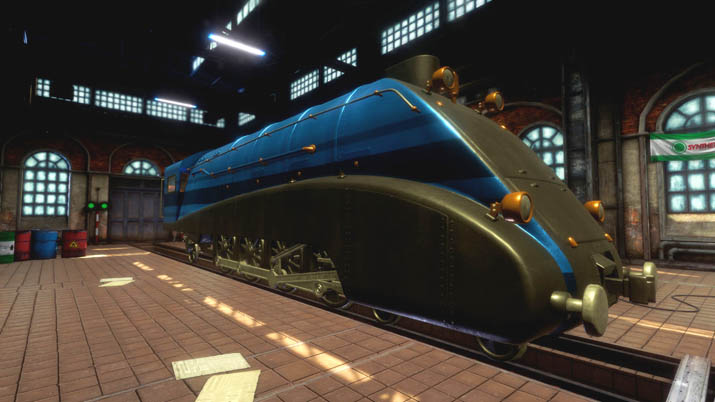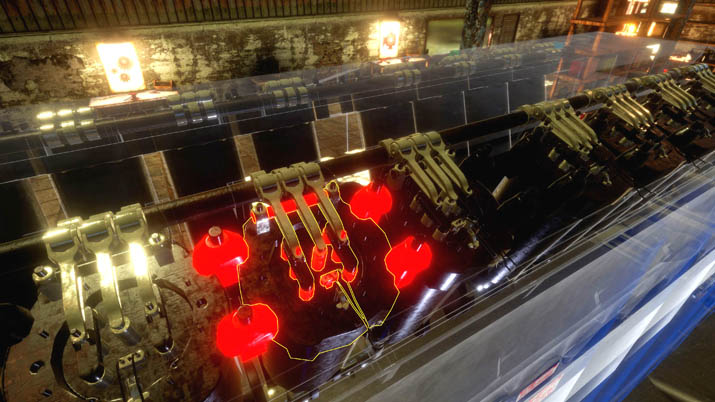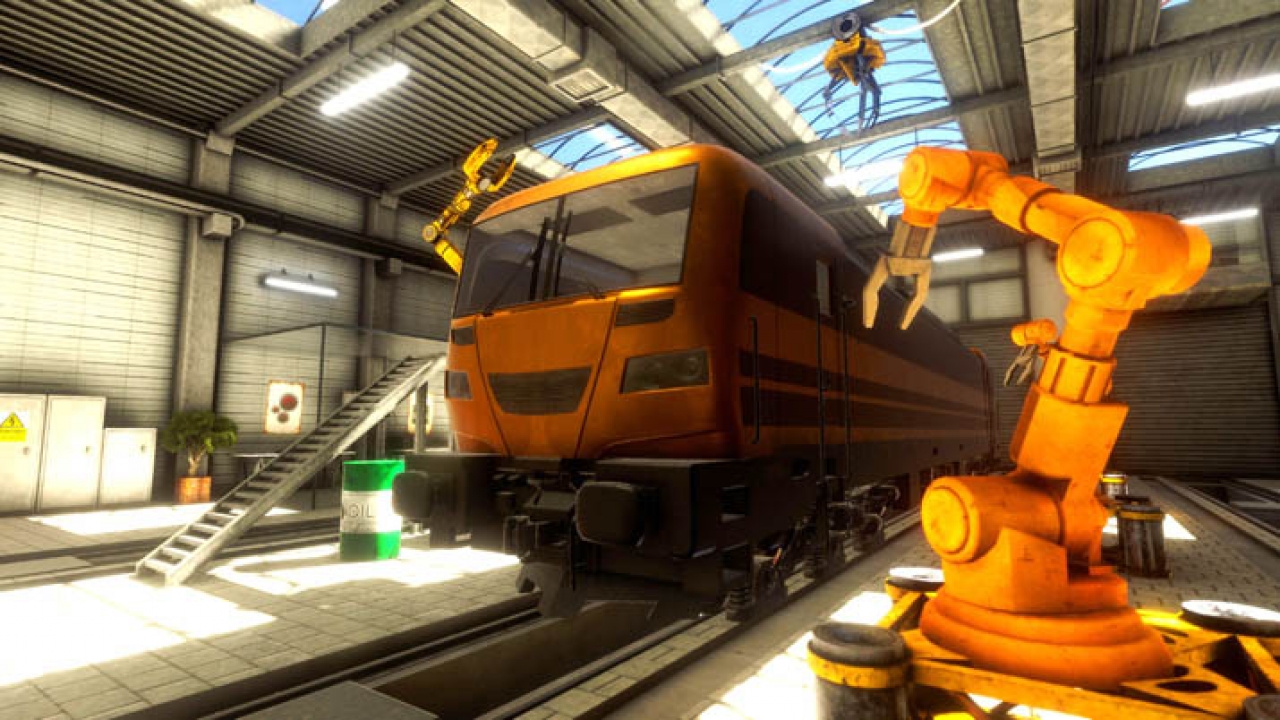The world of simulation games is a tricky business.
You need to be faithful to the simulation itself to provide immersion and realism, while balancing the fact that most tasks in the real world are repetitive, tedious, and don’t necessarily make for a fun game. The publisher PlayWay is an absolute juggernaut in the simulation space. PlayWay, a Polish company, has forty-four development teams at their disposal and sixty-six games currently in development. One of those titles is Train Mechanic Simulator, developed by Si7 Studio. This is Si7's first title, but they’re standing on the shoulders of giants. Train Mechanic Simulator was in Steam's top thirty in global sales and is firmly seated in popular new releases after launch.
Train Mechanic Simulator is built on a very similar (if not the same) engine as previous PlayWay Simulation titles such as Farm, Truck, and Car Mechanic Simulator. The earlier games were innovative and filled a void in my gaming life that I’ve had since playing Street Rod, a DOS game in the early 90s, and Gearhead Garage in 1999. This is a genre that I’ve been hoping would be resurrected for many years and each one of these games seems to build on each other. The titles are a dream come true for those of us who grew up tearing apart machines and appliances and who want to get our hands dirty without having to move around thousands of points worth of wheels and axles to do it. I’m personally praying to the simulations gods that one day we’ll have one giant simulation ecosystem where these are all tied together.

If you’ve played any of the previous 'Mechanic Simulator' games, then most of the game mechanics [EN: Ha.] will be nothing new to you. Train Mechanic Simulator is a linear game which presents you with a set of jobs that will get more complex as gameplay progresses. These jobs start as simple as changing hydraulic brake lines and advance to more complicated tasks like tearing down diesel engines cylinders or stripping the drive system down to just the truck frame in order to repair and reassemble. As you progress through the jobs, you’ll move from the diesel freight locomotives to electric commuter trains, and finally to the old workhorse of America, steam engines. Some components are shared amongst the different train styles, such as the main trucks, also known as a bogie, which houses all the axles and electric motors of both electric and diesel trains. Fun fact: The wheels of modern diesel engines are not driven by the engine and a transmission like a car, but robust electric motors that are powered by the diesel engine. If that’s something that interests you, then maybe you should pick up this game to find out more about these fascinating machines, because the models and parts are very realistic. The models and textures of the locomotives are very thorough, whether in the shop or on the tracks, and as someone who enjoys trains, you will looking around the train models -- as long as you can deal with the controls. When dealing with particular engine components, you need a high level of sensitivity, but this makes for an almost disorienting mouse speed when moving around the shop, and you’ll have to slow down as you move from the train to work benches, or to your office. It also means you have to be slow and methodical when replacing components, and each time will require you to double-click and move over a select button, so your mouse and hand will get quite a workout.
Obviously, a large feature of the simulator is working on different engine types.
Si7 Studio stepped it up by adding twenty-five square kilometers of track-laden landscape for your enjoyment. This environment hosts some cool features -- large bridges, old west oil derricks, train stations, and mountain passes, to name a few. The textures of the landscape aren’t exceptional, but that's pretty standard for the simulation genre. The trees are pretty generic, and the grass is in patches which look almost identical to the grass assets in Farming Simulator 2015. Then, as you’re gliding across the rails, you cross a vast canyon or rock formation that will give you pause, and you take in the sight for the moment until it passes. This land mass isn’t there strictly for your enjoyment: it's there for you to traverse as you venture out to find stalled or derailed engines. When you arrive, you might find an engine on its side after derailments, which happens more than you would expect. Luckily, you’re cruising around in the train-equivalent of a tow truck and have a crane on the back that will allow you to hoist the locomotive, which weighs anywhere from one-to-two hundred tons, and place it back on the track and tow it back to the shop. This element is one of the most entertaining aspects of the sim.

The only frustrating part is that sometimes, when you pull into a highlighted area on the map, the game orients you however it wants. You're in a different position or facing the opposite direction. This inconvenience takes away from the experience, which is the main issue I take with the title. You don’t have to get into proper positions before opening up the crane. You don’t have to pull up slowly or back up to a broken down engine on the tracks. You carelessly set the throttle wide open, and you’ll come to a stop and flip around ready to head back in the ‘proper’ direction. You don’t have to correctly pick your speeds, or even select your switches appropriately. You don’t have to adjust your positioning to back your fixer-upper into the proper bay, just cruise along at 70km/hr putting pull power to the rails and fly with reckless abandon. You can clip through the trees and posts and you still won’t derail, no matter how tight the turn. Now, I understand this isn’t a train driving simulator, but I enjoy backing trailers into tight spaces on truck sims. I like properly setting up my farm for ease of access to equipment. I am a sim gamer, and as such, I enjoy these small things and was looking forward to the more finely tuned aspects, but they just weren’t there.; I’ll just have to hold out hope for the sequel.

As you travel through the map or move from the diesel to electric depots, the styling will change. As you approach and work in the electric depot, the styling changes to the distinctive upturned-artichoke-leaf Asian-style roofing and the music will change to include stereotypical Asian flutes. This makes some sense, as the style of electric trains is most recognized in Asian countries, though it felt weird and forced. The main issue is that you can’t change your music, so if your music tastes don’t match the depot that your job is in, you’ll be stuck with that music or none at all. You also can’t just skip to the next depot either, because you must complete the missions in the current depot to unlock the next one, which can be quite numerous, and get old fairly quickly.
The Verdict
Train Mechanic Simulator succeeds in the mechanic simulator space. It has separated itself amongst its peers, but lacks the driving physics to be an independent train sim. The models are fantastic, but the focus of the sim is constructing and designing trains, so the driving environment leaves something to be desired. If you’re a fan of the genre or if you want to learn a little more about trains, it will certainly fascinate for a while. However, you need to be truly hardcore about the details of trains to get long term enjoyment from the Train Mechanic Simulator. If the model holds faithful to the other PlayWay Mechanic games, you’ll likely have some great, highly detailed DLC models coming in the future as well which adds to the longevity.


